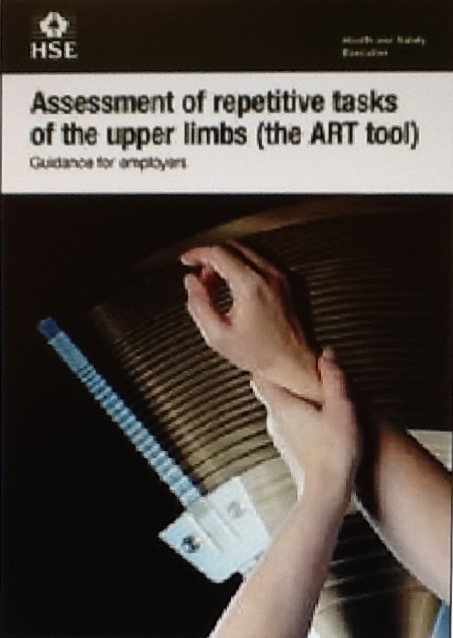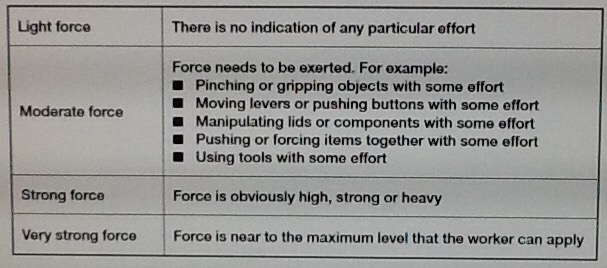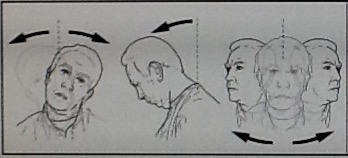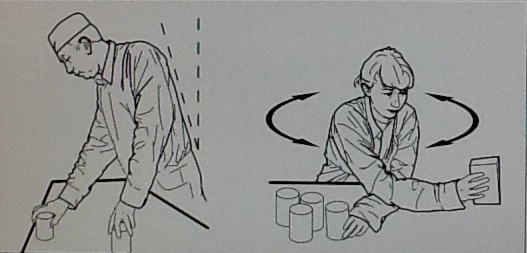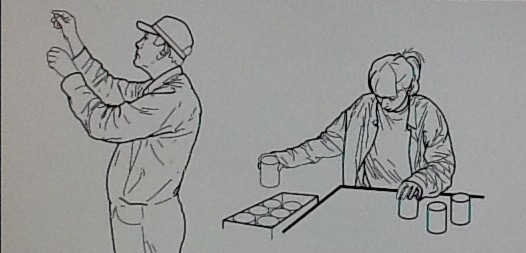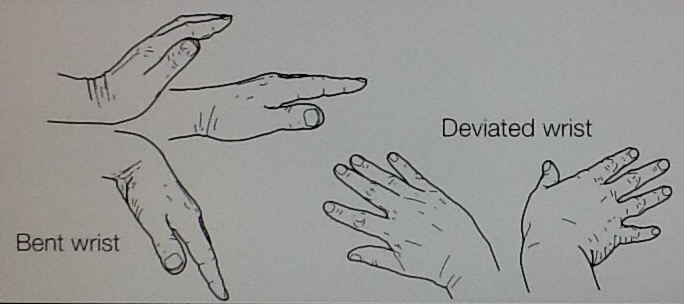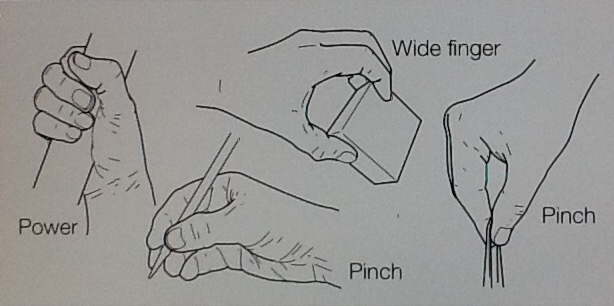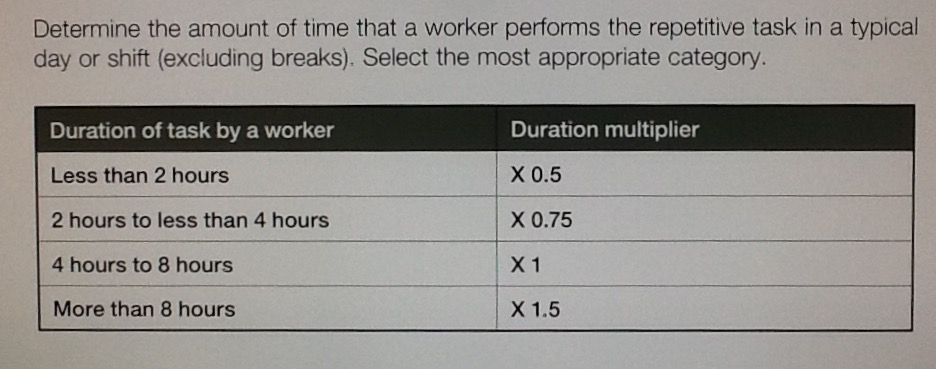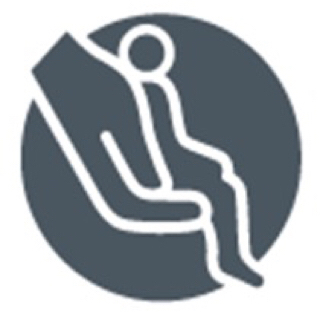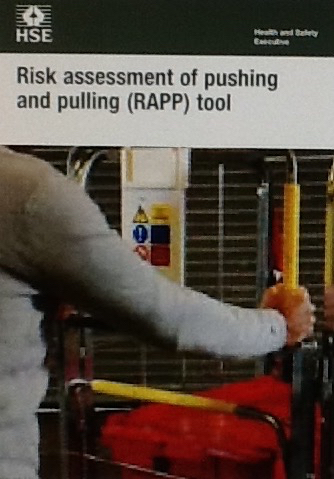Title Page
-
Document No.
-
Audit Title
-
Client / Site
-
Conducted on
-
Prepared by
-
Location
-
Personnel
-
Observe the movements of the arms and select the category that is most appropriate.
-
Left arm movements.
-
Right arm movements.
-
Observe the movement of the arm and hand (not fingers) and count the number of times the same or similar pattern of motion is repeated over a minute.
-
Left arm
-
Right arm
-
Using the guide and ask the operative to establish the level of force required to complete the task. If a very strong force is required then changes are required before continuing the assessment.
-
-
Level of force.
-
How frequently is the force used.
-
How frequently is the force used.
-
Determine the amount of time that the worker spends in the postures described below. This includes the time spent moving to a bent or twisted position repetitively and the time spent holding a bent or twisted position.
-
The head or neck is:
-
-
The back is:
-
The arm is considered to adopt an awkward posture if the elbow is raised to around chest height and the arm is unsupported (eg not resting on a workbench).
-
The left elbow is:
-
The right elbow is:
-
The wrist is considered to be bent or deviated if an obvious wrist angle can be observed.
-
The left wrist is:
-
The right wrist is:
-
Hand/finger grip
-
The left hand is a:
-
The right hand is a:
-
Determine the maximum amount of time that individuals perform the repetitive task without a break. Breaks are significant changes or pauses (eg of at least 5-10 minutes) in arm or hand activity. They include structured breaks such as meal breaks. They also include time spent performing other tasks that do not involve similar repetitive arm movements (eg a visual inspection task).
-
The worker performs the task continuously, without a break, for:
-
Speak to the workers about any difficulties they might have keeping up with the work. Select the most appropriate category.
-
Work pace:
-
Identify any other factors that are present in the task. For example.
- gloves affect grip and make handling the task more difficult.
- a tool (eg hammer, pick) is used to strike two or more times a minute.
- the hand is used as a tool (eg hammer) and struck ten or more times per hour.
- the tools, workpiece or workstation cause compression of the skin.
- the tools or workpiece cause discomfort or cramping of the hand or fingers.
- the hand/arm is exposed to vibration.
- the task requires fine precise movements of the hand or fingers.
- operators are exposed to cold drafts or grip cold tools.
- lighting levels are inadequate. -
Other factors affecting left arm
-
Other factors affecting right arm
-
Psychosocial factors are not given a score. However, they should be considered through discussion with workers and if present in the workplace be recorded below. They include things such as:
- little control over how the work is done.
- incentives to skip breaks or finish early.
- monotonous work.
- high levels of attention and concentration.
- frequent tight deadlines.
- lack of support from supervisors or co-workers.
- excessive work demands.
- insufficient training to do the job successfully. -
Enter psychosocial factors here.
-
Preview the assessment report to ascertain the total score I.e 15/248, apply the duration multiplier shown in the table and enter the result below.
-
Take a photo of the task.
